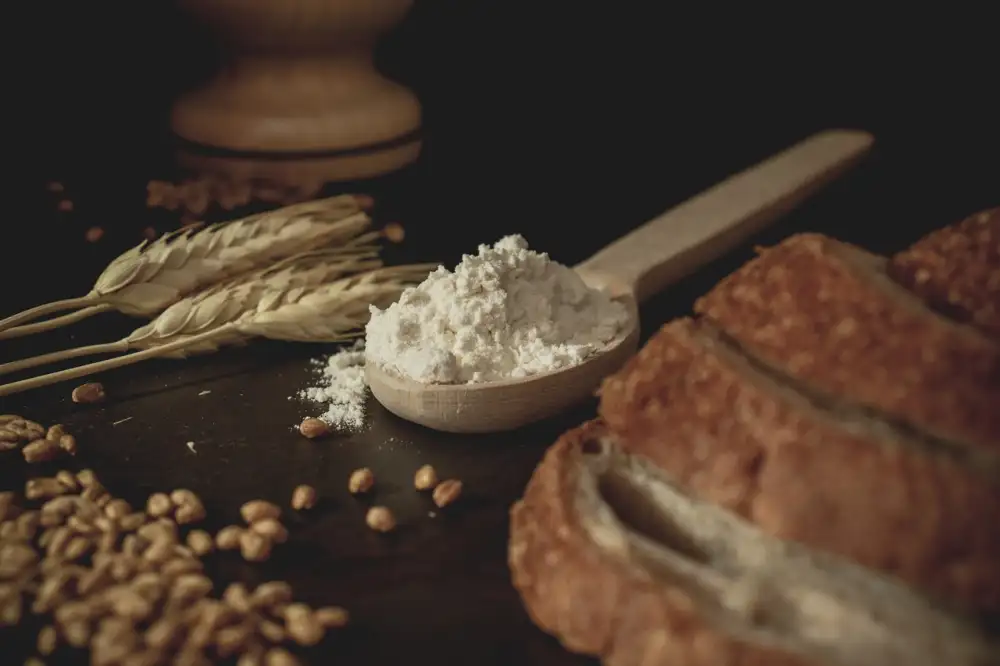Discover the Delightful Difference of Unbleached Flour in Your Favorite Recipes

Unbleached flour is a type of flour that has not undergone the bleaching process, unlike its counterpart, bleached flour. Bleached flour is chemically treated to speed up the aging process and achieve a whiter appearance. Unbleached flour, on the other hand, ages naturally over time or through exposure to oxygen. This natural aging process gives unbleached flour a slightly off-white color compared to bleached flour's bright white hue. Many bakers and chefs prefer unbleached flour for its more natural state and fuller flavor profile.
Benefits of Using Unbleached Flour in Recipes
**Benefits of Using Unbleached Flour in Recipes**
Unbleached flour offers several advantages over its bleached counterpart. Firstly, unbleached flour retains more nutrients such as fiber, minerals, and vitamins since it undergoes minimal processing. This makes it a healthier option for those looking to incorporate more nutritional value into their diet. Additionally, unbleached flour has a higher protein content compared to bleached flour, which results in better structure and texture in baked goods like bread and pastries. The natural aging process of unbleached flour also allows for better gluten development, leading to improved elasticity and rise in baked products. Overall, choosing unbleached flour can enhance the taste, texture, and nutritional profile of your favorite recipes.
How to Substitute Unbleached Flour in Different Recipes
When substituting unbleached flour in recipes, it's important to consider the differences it may bring compared to bleached flour. For every cup of all-purpose bleached flour, you can substitute with an equal amount of unbleached all-purpose flour. However, keep in mind that unbleached flour may absorb more liquid, so you might need to adjust the moisture content in your recipe accordingly. Additionally, unbleached flour tends to have a slightly higher protein content than bleached flour, which can result in a slightly denser texture in baked goods. Experimenting with small batches and making adjustments as needed will help you achieve the desired results when using unbleached flour in your favorite recipes.
Top Recipes Using Unbleached Flour
1. Classic Chocolate Chip Cookies: Unbleached flour enhances the texture and flavor of these timeless treats, giving them a slightly nuttier taste and a chewier consistency.
2. Flaky Pie Crust: Unbleached flour creates a tender and flaky pie crust that is perfect for both sweet and savory pies, ensuring a delicious base for your favorite fillings.
3. Homemade Bread: Using unbleached flour in bread recipes results in a better rise and a more robust flavor profile, making each slice irresistible.
4. Buttermilk Pancakes: Unbleached flour adds depth to the flavor of fluffy buttermilk pancakes, creating a breakfast staple that is sure to impress.
5. Rustic Pizza Dough: Unbleached flour lends itself well to pizza dough, providing a chewy yet crisp crust that serves as the perfect canvas for your favorite toppings.
Tips for Baking with Unbleached Flour
When baking with unbleached flour, it's essential to keep a few tips in mind to ensure the best results. Firstly, remember that unbleached flour tends to absorb more liquid than bleached flour, so you may need to adjust the amount of liquid in your recipe slightly. Additionally, unbleached flour has a higher protein content compared to bleached flour, which can result in a chewier texture in baked goods. To prevent this, avoid overmixing the batter or dough when using unbleached flour. Lastly, store your unbleached flour in an airtight container in a cool, dark place to maintain its freshness and quality for longer periods. By following these tips, you can make the most of the delightful difference that unbleached flour brings to your favorite recipes.
In conclusion, unbleached flour offers a wholesome and natural alternative to bleached flour in your favorite recipes. Its higher protein content and lack of chemical additives make it a healthier choice for baking. By using unbleached flour, you can enhance the flavor, texture, and nutritional value of your dishes. Experiment with different recipes and enjoy the delightful difference that unbleached flour can bring to your culinary creations. Make the switch today and savor the freshness in every bite!
Published: 25. 04. 2024
Category: Recipes



